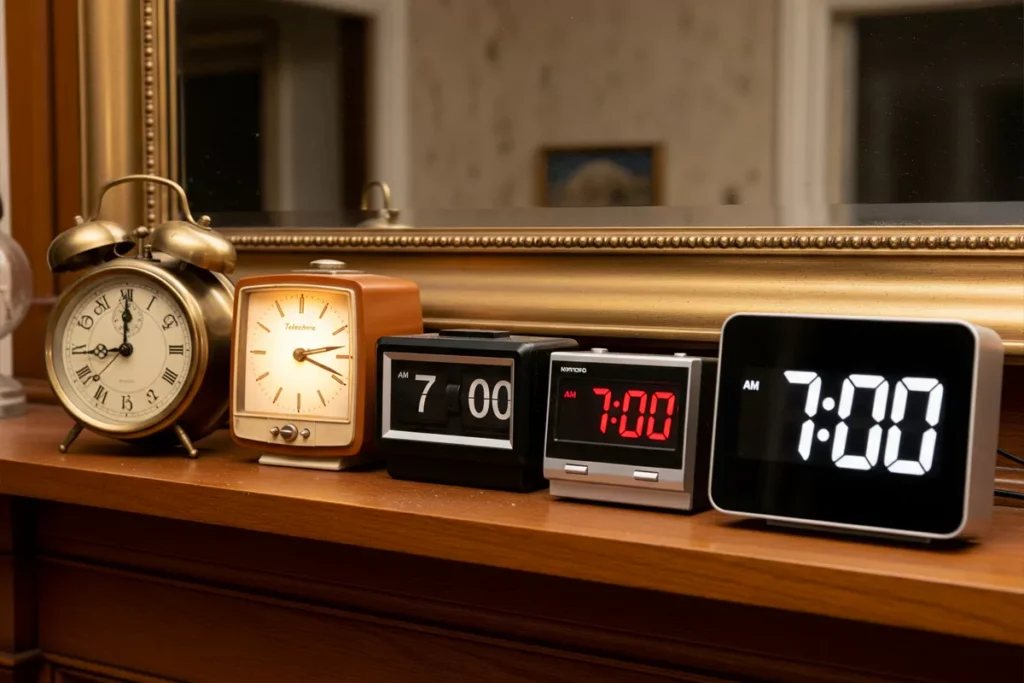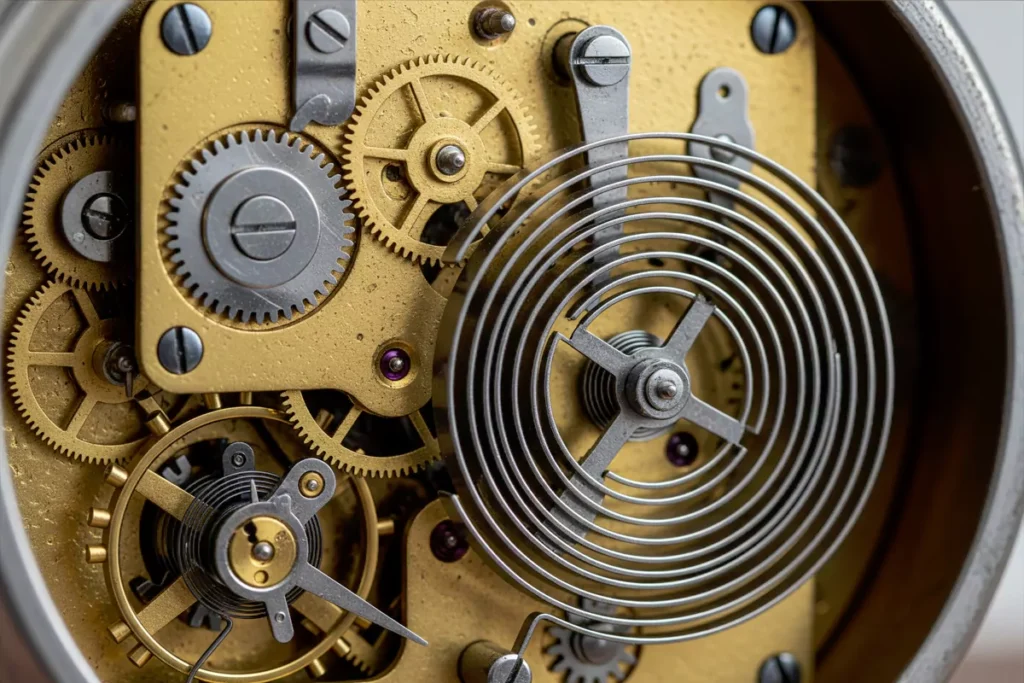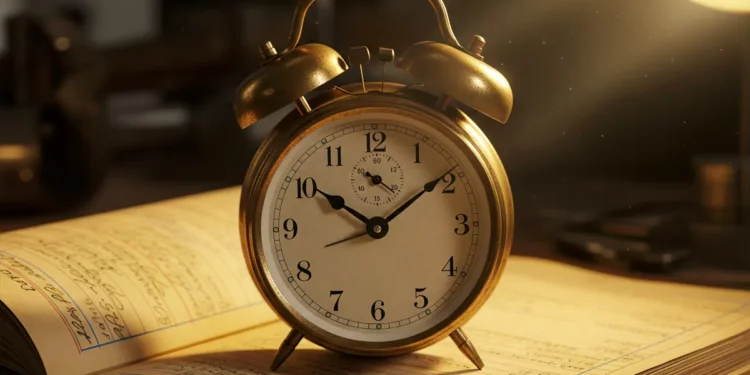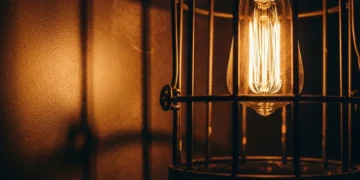A critical history of the history of the alarm clock — how timed waking shaped labor regimes, schooling, and the psychology of punctuality.
Table of Contents
Introduction
The history of the alarm clock begins not as a story of convenience, but as one of control. It is a narrative written to the rhythm of the factory whistle and the punch card, a technology designed not to rouse us gently, but to discipline us. For over a century, this seemingly benign bedside device has been the first authority we bow to each day, the miniature tyrant that dictates when our consciousness must begin.
Its daily summons is so ingrained in modern life that we rarely stop to question its origins or its purpose. We see it as a tool we own, yet it is a tool that owns our time, meticulously shaping our lives to fit a schedule that was not built for our well-being, but for economic efficiency.
This article peels back the familiar face of the clock to expose the machinery of power humming beneath. We will journey back to a pre-industrial world governed by the sun and the seasons, exploring the lost art of waking before a mechanical beep became the standard. We will then dissect the alarm clock’s pivotal role in forging the modern worker, showing how industrialization demanded a newly synchronized and punctual labor force, and how the clock became its primary instrument of enforcement. This investigation will go beyond the factory floor, delving into the psychological consequences—the manufactured anxiety and internalized guilt—that define our modern relationship with punctuality.
Furthermore, we will analyze the flawed evolution of wake-time technology through the 20th century, exposing the snooze button not as a mercy, but as a deceptive tool of compliance. Finally, we will look to the future, questioning whether today’s smart devices and sleep trackers offer true liberation or simply a more sophisticated form of temporal control. This is the critical history of the alarm clock: an exploration of how a simple machine taught us obedience, manufactured our mornings, and forever changed our perception of time itself.
Before the Beep: The Pre-Industrial Art of Waking
Long before the first mechanical buzz shattered the morning calm, humanity woke in ways that seem almost idyllic by modern standards. Life was tethered not to the minute hand, but to the grand, cyclical clocks of the natural world. The rising sun, the crow of a rooster, or the internal rhythms of a body attuned to its environment were the primary signals to begin the day. This pre-industrial relationship with waking was fluid and organic, dictated by season and necessity rather than by an arbitrary, external authority. The very concept of waking at a precise, predetermined minute was foreign to most, a manufactured anxiety that had not yet been invented.
The initial forays into wake-up technology were not instruments of mass control but novelties for the elite or community-based solutions. The Greek philosopher Plato is said to have devised a water clock, or clepsydra, that would whistle to signal the start of his lectures—an early ancestor in the history of the alarm clock, but one designed for intellectual assembly, not labor. Later, in industrializing Britain, the “knocker-upper” became a common sight, a person hired to tap on workers’ windows with a long stick. This human alarm system was a crucial bridge, signifying the growing need for a synchronized workforce but retaining a personal, communal touch soon to be lost.
This era was governed by what historians call task-oriented time. The day’s structure was defined by the work to be done—plowing a field until it was finished, milking the cows at dawn, mending nets when the tide was out. Time was measured in completed tasks, not in abstract, billable hours. This approach fostered a relationship with work and life that was inseparable from the natural environment and the community’s needs. It was a world of inherent flexibility, a world standing in stark contrast to the rigid, unforgiving schedule that the history of the alarm clock would soon impose upon society.

Forging the Modern Worker: The Alarm Clock and Industrialization
The Industrial Revolution demanded a new kind of human: one who was punctual, obedient, and perfectly synchronized with the machine. The factory whistle was the first instrument of this mass discipline, its shrill call dictating the start and end of the workday for entire towns. But its reach was limited to the factory gates. To truly forge the modern worker, that same rigid authority had to be brought into the most private of spaces—the bedroom. The alarm clock was the answer, a miniature tyrant designed to ensure that the workforce arrived on time, every time. This pivotal moment in the history of the alarm clock marks its transition from a novelty to a necessity of industrial capitalism.
The evolution of alarm devices accelerated rapidly to meet this new demand. While an American clockmaker named Levi Hutchins created a personal alarm device in 1787, his was a one-off invention designed only to wake himself. The first patent for a mechanical, adjustable alarm clock was granted to Frenchman Antoine Redier in 1847. This innovation was a game-changer. As manufacturing techniques improved, companies like the Ansonia Clock Company and Seth Thomas Clock Company in the United States began mass-producing affordable alarm clocks. Suddenly, the power to enforce punctuality was decentralized from the factory owner to the workers themselves, a subtle yet profound shift in the dynamics of control.
This connection between the alarm clock and industrialization cannot be overstated; they were technologies that co-evolved. The clock provided the disciplined labor force that the factories required, synchronizing thousands of individuals to the precise rhythms of mass production. In doing so, it became an essential tool for maximizing efficiency and profit. Workers who once measured their days by the sun were now shackled to the clock, their waking hours dictated not by natural rhythms, but by the relentless economic logic of the factory floor. This chapter in the history of the alarm clock reveals its true purpose: not merely to wake us, but to mold us into compliant participants in a new economic order.
The Clock in Our Heads: Manufacturing Punctuality and Anxiety
The true power of the alarm clock was not merely mechanical; it was psychological. Its relentless daily summons moved the locus of control from the external factory whistle to the internal conscience of the worker. This was the masterstroke of time discipline history. The responsibility for punctuality was no longer a collective, public affair but a private, individual burden. The clock on the nightstand became a personal supervisor, ensuring that the logic of the assembly line was the first thought upon waking. This shift was fundamental, transforming an external command into an internalized duty and forever altering the human relationship with time.
This internalized pressure began to manufacture new anxieties. Being “on time” was reframed as a moral virtue, while tardiness became a sign of laziness or poor character. The history of the alarm clock is therefore also the history of a new kind of guilt—the nagging feeling of being perpetually behind schedule, the low-grade stress of racing against a clock that you yourself have set. This manufactured urgency served the interests of industrial and corporate structures perfectly, creating a workforce that policed itself, driven by a deep-seated fear of falling out of sync with the relentless pace of modern production.
Ultimately, this clock-driven mentality bled out from the factory and into every corner of society. The school bell mimicked the factory whistle, training children from a young age to respond to timed commands and adhere to rigid schedules. Offices adopted the same temporal logic, and even social engagements became strictly timed events. Punctuality was no longer just a workplace requirement; it became a universal marker of respectability and personal responsibility. The clock in our heads, first installed by the history of the alarm clock, now governs our entire existence, a silent testament to a world built on manufactured obedience.

A Flawed Perfection: The 20th-Century Evolution of Wake-Time Technology
The 20th century saw the alarm clock perfect its role as the relentless gatekeeper of the modern schedule. The technology evolved from clunky, hand-wound mechanical devices to electric clocks that hummed with constant, plugged-in authority. Then came the digital revolution, replacing ticking hands with the ominous, glowing red numerals of the clock radio, a device that often fused the jarring alarm with the vacuous chatter of morning broadcasts. Each step in this flawed history of the alarm clock was not an evolution toward freedom but a refinement of its efficiency. The technology became more precise, more reliable, and more deeply embedded in the fabric of domestic life, ensuring its tyranny was inescapable.
Perhaps the most insidious innovation in wake-time technology was the snooze button. Patented in the 1950s, it presented itself as a merciful concession, a small act of defiance against the morning’s rigid demands. Yet, the snooze button is a trick. It offers a fragmented, low-quality reprieve while ultimately reinforcing the clock’s absolute power. This negotiation—stealing nine more minutes—is a perfect metaphor for our conflicted relationship with structured time. It’s a false rebellion that only prolongs the inevitable surrender, turning the process of waking into a series of repeated shocks rather than a single, decisive one, deepening the consequences of the history of the alarm clock.
This fraught relationship is reflected throughout popular culture. The image of a character violently smashing their alarm clock is a familiar trope, a cathartic fantasy for anyone who has felt oppressed by its daily summons. In films and cartoons, from Groundhog Day to Office Space, the alarm clock is the antagonist of the morning, the audible symbol of monotony, and the soul-crushing routine of the daily grind. It represents the start of another day spent in service to a schedule that is not our own. This cultural resentment exposes the device’s true nature: not as a helpful tool, but as the tolerated warden of our manufactured lives.
Beyond the Alarm: The Future of Waking and Resisting Time Control
The classic bedside alarm clock is fading, but its underlying principle is being reborn in more sophisticated forms. Today, the smartphone is the primary tool of waking, armed with customizable tones, gradual volume increases, and integrated calendars that dictate our schedules before our eyes even open. Alongside it, a new generation of wake-time technology has emerged: sunrise simulators that mimic natural light, and wearable sleep trackers that promise to wake us at the optimal moment in our sleep cycle. This evolution represents the latest attempt to refine the process of forced waking, cloaking the old tyranny in the language of wellness and optimization.
But do these innovations offer genuine liberation, or do they represent a more insidious form of control? While a simulated sunrise is certainly gentler than a jarring beep, the goal remains the same: to subordinate our natural sleep patterns to an external schedule. Furthermore, sleep-tracking technology turns our rest into a data set to be measured, analyzed, and improved. This quantification of sleep is the ultimate extension of time discipline, a drive to manage and perfect every moment of our existence, awake or asleep. Rethinking the history of the alarm clock requires us to be skeptical of solutions that merely replace an old master with a smarter one.
True resistance lies not in a better alarm, but in dismantling the structures that make it a necessity. The growing movements for flexible work hours, remote work, and a four-day workweek are direct challenges to the rigid, industrial-era schedule that the alarm clock was built to serve. There is a renewed interest in understanding and honoring natural sleep cycles, a quiet rebellion against the notion that everyone must conform to a single, monolithic workday. The future of waking, if it is to be a humane one, lies in reclaiming the autonomy to listen to our own bodies, ending the long, oppressive reign that defines the history of the alarm clock.

Conclusion
From a world guided by the sun to one ruled by the second hand, the history of the alarm clock is a stark chronicle of lost autonomy. We have seen how organic, task-oriented rhythms were systematically replaced by the rigid, unforgiving schedule of industrial capitalism. The alarm clock was not merely an invention to help people wake up; it was a weapon of mass synchronization, designed to forge a compliant and punctual workforce. It took the logic of the factory—efficiency, control, and obedience—and installed it on our nightstands, ensuring that the demands of the machine were the first thing we answered to each day.
This mechanical authority soon became a psychological one. The relentless ticking and the jarring morning buzz taught us to internalize time discipline, manufacturing a deep-seated anxiety around punctuality that now feels innate. Throughout the 20th century, its evolution only refined this control, with innovations like the snooze button offering a mere illusion of rebellion while ultimately reinforcing our submission. The device became a cultural symbol of the daily grind, a constant reminder of our subservience to a schedule that prioritizes productivity over personal well-being, a defining consequence of the history of the alarm clock.
Ultimately, the story of this device is a story about power. It reveals how a seemingly simple piece of technology was instrumental in structuring modern life, molding our behavior to serve an economic system. While today’s smartphones and sleep trackers offer a gentler wake-up call, they represent a continuation of this legacy, wrapping surveillance in the language of wellness. The true challenge, then, is not to find a better alarm but to question the rigid timetables that make it a necessity. To understand the flawed history of the alarm clock is to understand that reclaiming our mornings is an act of resistance against a century of manufactured obedience.








